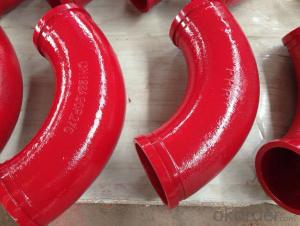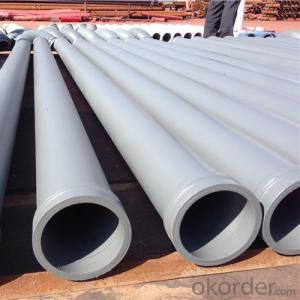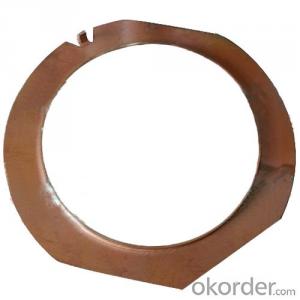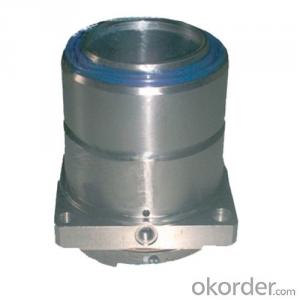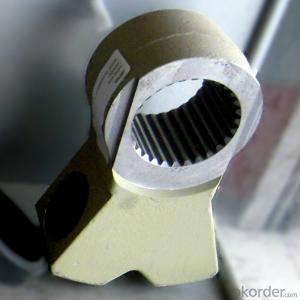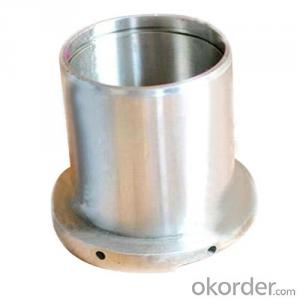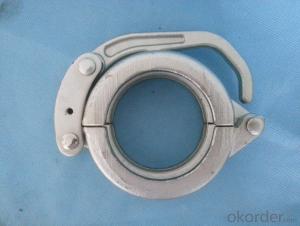Concrete Pumps Spare Parts Collar Disc Q80
- Loading Port:
- Tianjin
- Payment Terms:
- TT OR LC
- Min Order Qty:
- 1 pc
- Supply Capability:
- 1000 pc/month
OKorder Service Pledge
OKorder Financial Service
You Might Also Like
Product Description:
The Concrete Pumps Spare Parts Collar Disc Q80 normally made by special steel materials, according to customer’s requests, and also package in plywood box and put into container.
Scope of Application of the Goods
The Concrete Pumps Spare Parts Collar Disc Q80 is a concrete pumps parts for combined use with other concrete parts in for concrete pumps and truck pumps. It can be widely used in the construction of various types of concrete structures like industrial and civil buildings, bridges, roads, and other types of infrastructure.
This pipes can only be used in concrete construction operations, but not in any other operations, like dragging, moving, or hoisting heavy articles or personnel. The pipe is also not allowed to be used in any location where any combustible or explosive material exists or a cave-in may occur.
Product Advantages:
OKorder's Concrete Pumps Spare Parts Collar Disc Q80 Channels are durable, strong, and safety.
Main Product Features:
· Premium quality
· Prompt delivery & seaworthy packing (5-10 days)
Reliable performance
Easy to weld
High safety.
· Professional Service
· Competitive pricing
Measuring of wall thickness from the outside
Low purchase cost
Specifications:
CNBM No. | 2090023 |
Original No. | 066586005 |
Description | Collar Disc Q80 |
Remark |
FAQ:
Q1: How long about delivery time Concrete Pumps Spare Parts Collar Disc Q80 ?
A1: Normally we keep the raw materials for old customers and sometime we also keep stock products to make sure delivery time in any emergency cases.
Q2: How do we guarantee the quality of our Concrete Pumps Spare Parts Collar Disc Q80 ?
A2: We have established an advanced quality management system which conducts strict quality tests at every step, from raw materials to the final product. At the same time, we provide extensive follow-up service assurances as required.
Q3: How soon can we receive the product after purchase?
A3: Within three days of placing an order, we will book the vessel for goods. The specific shipping date is dependent upon international and government factors, but is typically 7 to 30 workdays.
Q4: If we can produce some goods according to customers request?
A4: Yes, we can produceCollar Disc Q80 according to the difference country situations to make it suitable to the market and customers. We have very professional technical team to make the design.
Q5: How to make a quick resolution for after service?
A5: OKorder and our manufacture both have overseas branches all-around of world.
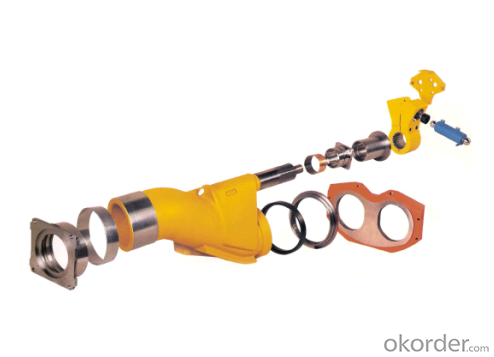
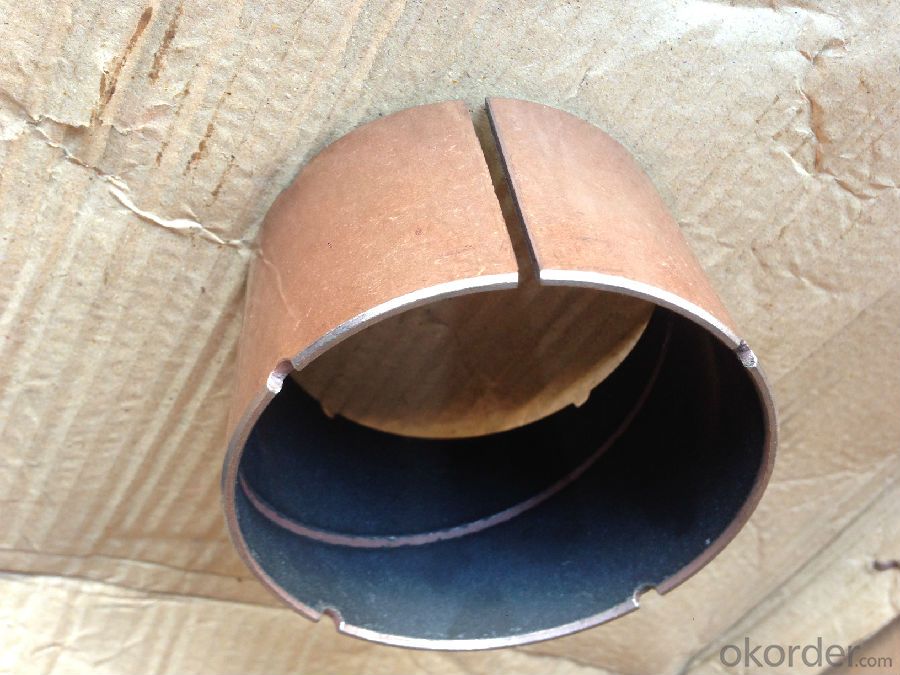
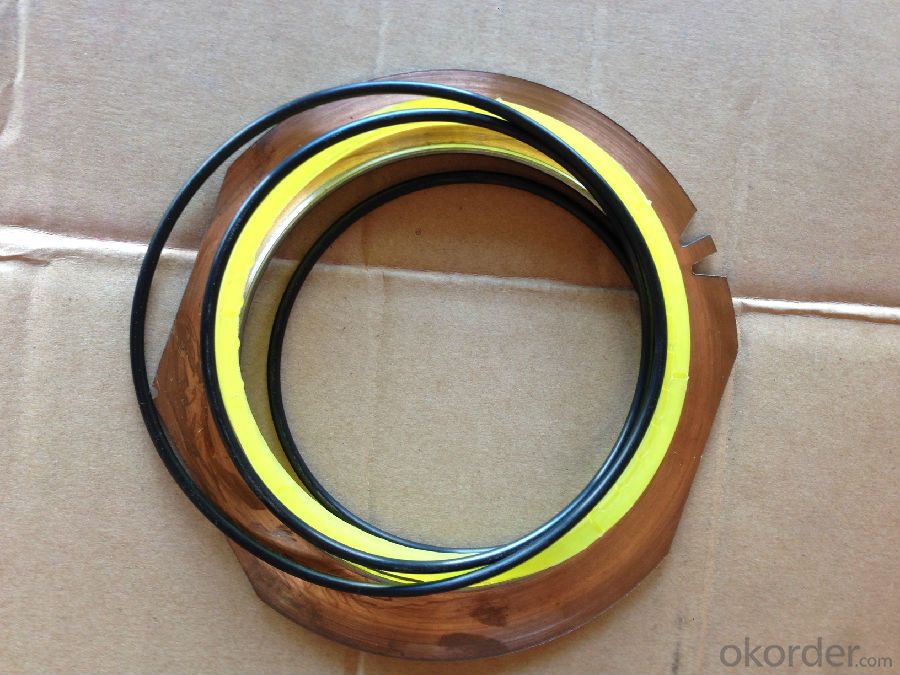


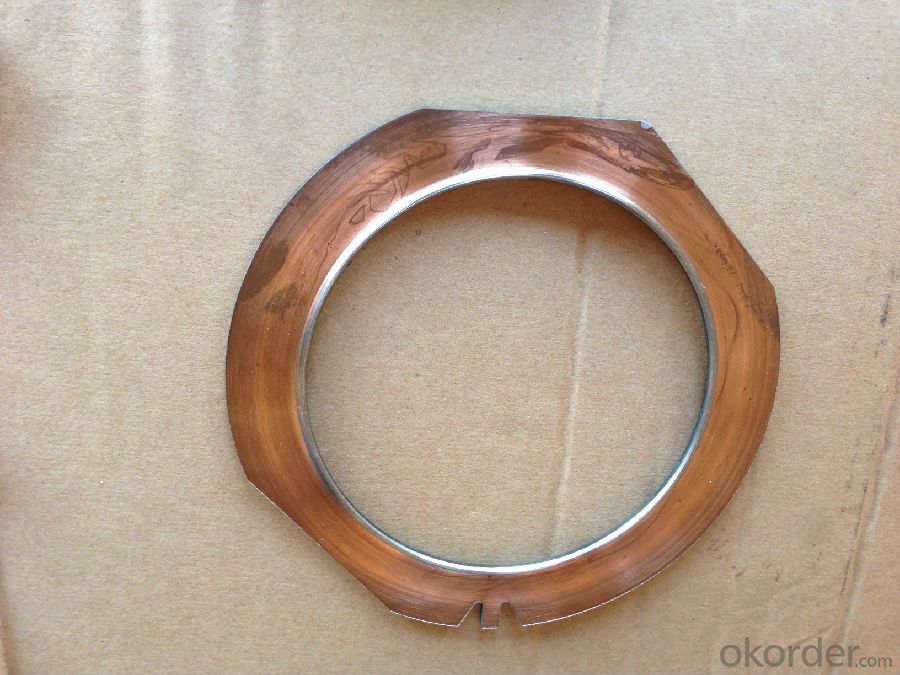
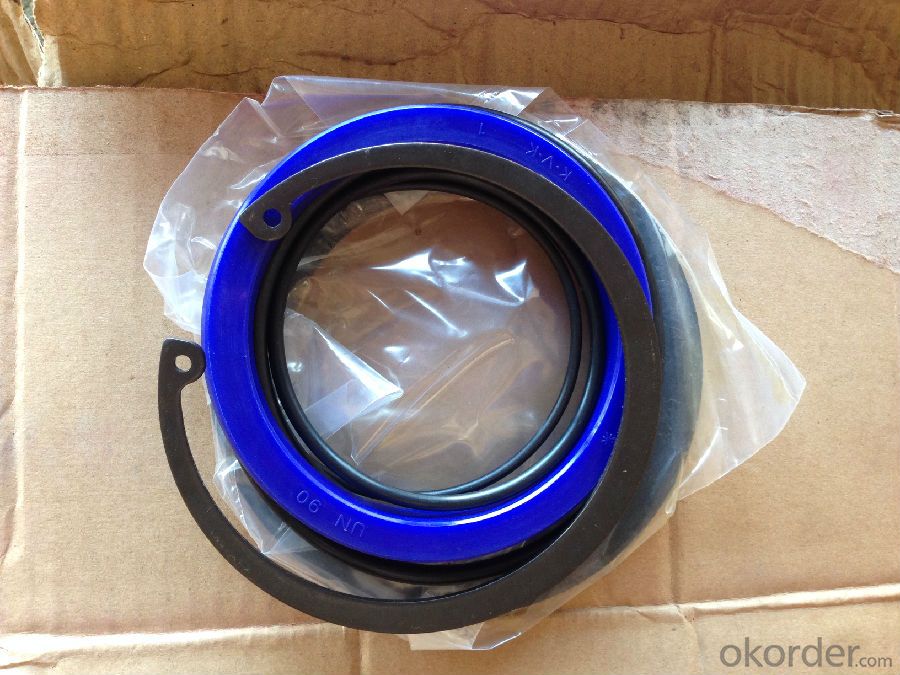
- Q: Can I get spare parts for concrete pump hydraulic cylinders and valves?
- Yes, you can definitely get spare parts for concrete pump hydraulic cylinders and valves. There are numerous companies and suppliers that specialize in providing spare parts for construction equipment, including hydraulic cylinders and valves for concrete pumps. These spare parts can be easily sourced online or through local distributors. It is important to ensure that you provide accurate information about the make and model of your concrete pump to ensure compatibility and proper functioning of the spare parts. Additionally, it is advisable to choose reputable suppliers who offer high-quality, genuine spare parts to guarantee optimal performance and durability.
- Q: What are the signs of a malfunctioning concrete pump control valve?
- There are several signs that can indicate a malfunctioning concrete pump control valve. Some of the most common signs include: 1. Inconsistent or uneven flow of concrete: A malfunctioning control valve can result in irregular flow of concrete, causing it to be unevenly distributed or even stopping the flow altogether. 2. Pressure fluctuations: If the control valve is not working properly, it can lead to fluctuations in the pressure of the concrete pump. This can cause inconsistent output and potentially damage the pump or other components. 3. Increased noise levels: A malfunctioning control valve may produce unusual or excessive noise during operation. This can be an indication of internal issues or improper functioning of the valve. 4. Leakage or dripping: Another sign of a malfunctioning control valve is the presence of leaks or drips around the valve or its connections. This can indicate seal failure or other problems that need to be addressed. 5. Difficulty in controlling the pump: When the control valve is not functioning correctly, it can become difficult to control the pump's operations. This can include issues with starting or stopping the pump, as well as controlling the speed and direction of the concrete flow. 6. Increased energy consumption: A malfunctioning control valve may result in increased energy consumption as the pump works harder to compensate for the valve's inefficiencies. This can lead to higher operating costs and decreased overall efficiency. If any of these signs are observed, it is important to address the issue promptly. Malfunctioning control valves can lead to costly repairs, downtime, and potential safety hazards. It is recommended to consult a professional technician or service provider to diagnose and resolve the problem.
- Q: How do I properly maintain and replace hydraulic valves in concrete pump spare parts?
- Proper maintenance and replacement of hydraulic valves in concrete pump spare parts involve a few key steps. Firstly, it is crucial to regularly inspect the valves for any signs of wear, damage, or leakage. This can be done by checking the valve body, seals, and connections. Secondly, ensure that the valves are lubricated according to the manufacturer's recommendations to prevent friction and extend their lifespan. Additionally, it is essential to adhere to the specified pressure and temperature limits during operation, as exceeding these limits can lead to valve failure. When it comes to replacement, it is recommended to consult the equipment manual or seek professional assistance to ensure that the correct valves are selected and installed accurately. Regular maintenance and timely replacement of hydraulic valves will ensure the optimal performance and longevity of the concrete pump spare parts.
- Q: How can one determine the correct voltage and current rating for electrical components in concrete pump spare parts?
- To determine the correct voltage and current rating for electrical components in concrete pump spare parts, several factors need to be considered. Firstly, it is essential to consult the manufacturer's specifications and documentation for the concrete pump and its spare parts. These documents usually provide detailed information about the voltage and current requirements for each electrical component. Paying close attention to these guidelines ensures that the components are operated within their designed parameters. Secondly, it is crucial to understand the electrical system and its requirements. This involves analyzing the power supply available at the site where the concrete pump will be used. Factors such as the voltage level (e.g., 110V, 220V, 440V) and frequency (e.g., 50Hz, 60Hz) of the electrical supply need to be taken into account. Additionally, the maximum current capacity of the electrical system must be considered to prevent overload situations. Furthermore, it is advisable to assess the specific application and operating conditions of the concrete pump. Different components may have varying voltage and current requirements depending on their function and the environment in which they are used. For instance, components installed in outdoor areas may require higher voltage ratings to withstand harsh weather conditions. Lastly, seeking professional assistance from qualified electricians or engineers is highly recommended. They possess the expertise and knowledge to accurately determine the voltage and current ratings for electrical components in concrete pump spare parts. Their experience allows them to consider various factors such as safety regulations, compatibility with the existing electrical system, and any specific requirements of the concrete pump manufacturer. By taking into account the manufacturer's specifications, understanding the electrical system, considering the application and operating conditions, and seeking professional advice, one can effectively determine the correct voltage and current rating for electrical components in concrete pump spare parts.
- Q: How can a faulty battery affect the operation of the pump?
- A faulty battery can significantly affect the operation of a pump. Firstly, a faulty battery may not provide enough power to the pump, resulting in slow or weak pumping action. This can impact the pump's ability to generate the necessary pressure or flow rate, leading to inefficient or ineffective operation. Additionally, a faulty battery may cause intermittent power supply to the pump. This can result in inconsistent pumping action, with the pump starting and stopping sporadically. Such interruptions can create inefficiencies, reduce the pump's performance, and potentially cause damage to the equipment or system being operated. Furthermore, a faulty battery may not hold a charge for an extended period. This can limit the pump's runtime, requiring frequent recharging or replacement of the battery. In scenarios where a pump is needed for continuous or prolonged usage, a faulty battery can disrupt operations, leading to downtime and reduced productivity. Moreover, a faulty battery can also impact the overall lifespan of the pump. If the battery does not provide the necessary power consistently, the pump may experience strain or excessive wear, potentially shortening its operational life. Overall, a faulty battery can have various adverse effects on the operation of a pump, including reduced performance, inconsistent pumping action, limited runtime, potential damage, and decreased equipment lifespan. Regular maintenance and timely replacement of faulty batteries are crucial to ensure optimal pump performance and longevity.
- Q: How can a faulty electric motor affect the pump's performance?
- A faulty electric motor can have a significant impact on the pump's performance. Firstly, the motor is responsible for providing the necessary power to drive the pump. If the motor is faulty, it may not be able to generate the required amount of power, leading to a decrease in the pump's performance and overall efficiency. This can result in reduced flow rates and lower pressure output, leading to inadequate functioning of the pump. Moreover, a faulty motor can also lead to issues such as increased energy consumption and overheating. If the motor is not functioning properly, it may draw excessive electrical current, causing higher energy usage and increased operational costs. Additionally, an overheating motor can result in damage to the pump and other related components, further impacting performance and potentially leading to costly repairs or replacements. Furthermore, a faulty motor can also impact the reliability and longevity of the pump. Continuous operation with a faulty motor can put excessive strain on the pump, leading to premature wear and tear, increased maintenance requirements, and a shorter lifespan. This can result in frequent breakdowns, downtime, and a decrease in overall productivity. Overall, a faulty electric motor can have various negative effects on the pump's performance, including lower flow rates, reduced pressure output, increased energy consumption, overheating, and decreased reliability. It is crucial to regularly inspect and maintain motors to ensure their optimal functioning and avoid any detrimental impacts on the pump's performance.
- Q: How often should hopper grate pins be inspected or replaced in a concrete pump?
- To maintain proper functioning and prevent potential problems, it is important to regularly inspect the hopper grate pins in a concrete pump. A suggested guideline is to inspect these pins at least once a month or after every 200 hours of operation, whichever comes first. However, the inspection frequency may vary based on the specific conditions and usage of the concrete pump. During the inspection, it is crucial to examine the hopper grate pins for any signs of wear, damage, or deformities. If any issues are discovered, they should be promptly addressed to prevent further damage and ensure the safe and efficient operation of the concrete pump. When significant signs of wear or damage are observed in the hopper grate pins, it is necessary to replace them immediately to maintain their functionality. It is important to follow the manufacturer's guidelines and recommendations for replacing these pins, as they may differ depending on the specific model and design of the concrete pump. By conducting regular inspections and replacing hopper grate pins in a timely manner, the longevity and reliability of the concrete pump can be enhanced, reducing the risk of unexpected breakdowns and ensuring optimal performance.
- Q: Can concrete pump spare parts be customized with branding or logos?
- Branding or logos can indeed be customized for concrete pump spare parts. Numerous manufacturers and suppliers provide the opportunity to tailor spare parts with branding or logos, catering to the unique needs of each customer. This customization entails incorporating logos, names, or distinct branding elements onto the spare parts. Not only does it enhance the visual appeal of the spare parts, but it also aids in promoting the brand or company. Additionally, personalized branding or logos on concrete pump spare parts can serve as identification and facilitate differentiation from other parts, particularly in situations requiring repair or replacement.
- Q: Can concrete pump spare parts be coated with corrosion inhibitors for long-term storage?
- Concrete pump spare parts have the capability to be coated with corrosion inhibitors in order to ensure long-term storage. Corrosion inhibitors, which are chemicals, can be applied onto metal surfaces to either prevent or minimize the corrosion process. By administering a coating of corrosion inhibitor onto concrete pump spare parts, a protective layer can be formed, preventing any contact between moisture, oxygen, and the metal. Consequently, the chances of corrosion are significantly reduced. This becomes particularly crucial when considering long-term storage, as the spare parts might encounter harsh environmental conditions or be stored in damp areas. Ultimately, the corrosion inhibitor coating serves to extend the lifespan of the spare parts and guarantee their preservation until they are required for use.
- Q: What is the function of a concrete pump remote control antenna?
- The function of a concrete pump remote control antenna is to establish a wireless connection between the remote control device and the concrete pump. This allows the operator to remotely control the various functions of the concrete pump, such as starting and stopping the pump, adjusting the speed and flow of the concrete, and controlling the boom movements. The antenna receives signals from the remote control device and transmits them to the concrete pump, enabling the operator to control the pump from a safe distance. This helps improve efficiency, accuracy, and safety on construction sites by allowing the operator to have better visibility of the pump and its surroundings while still maintaining full control over its operations.
Send your message to us
Concrete Pumps Spare Parts Collar Disc Q80
- Loading Port:
- Tianjin
- Payment Terms:
- TT OR LC
- Min Order Qty:
- 1 pc
- Supply Capability:
- 1000 pc/month
OKorder Service Pledge
OKorder Financial Service
Similar products
Hot products
Hot Searches
Related keywords











